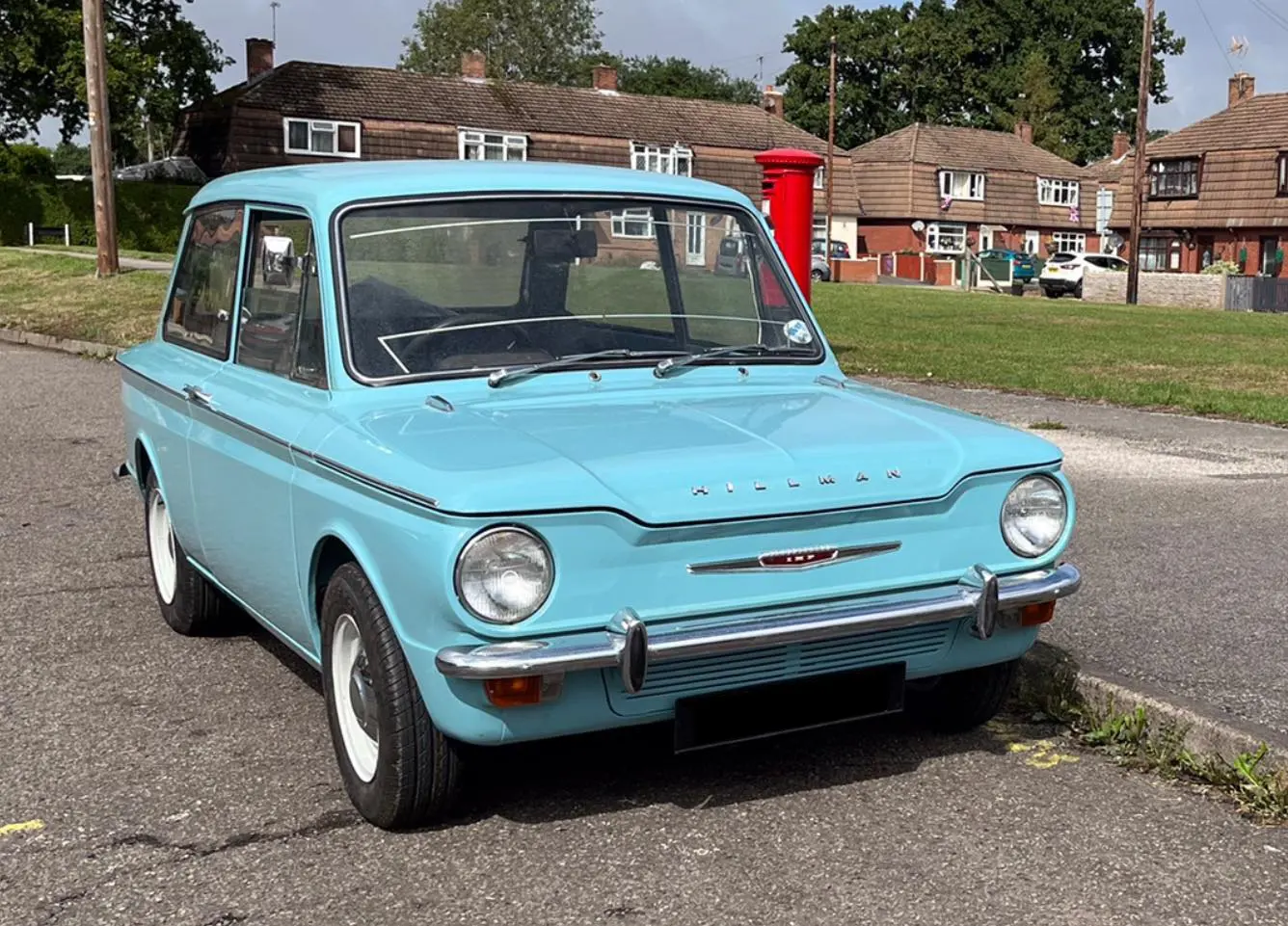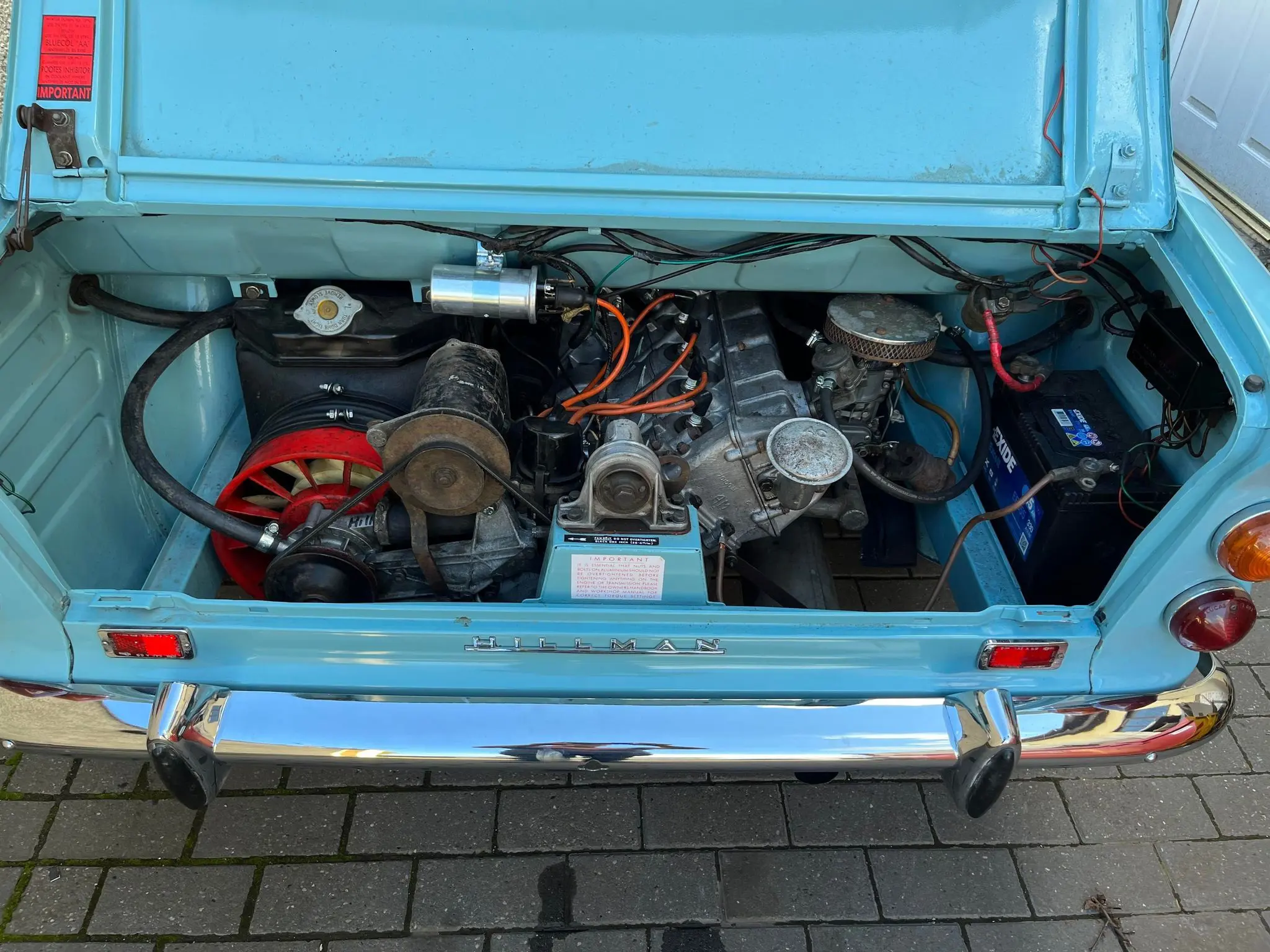MEET THE OWNER – JEFF DAY’S 60 YEAR OLD HILLMAN IMP
12 May 2023
On 3 May 1963, the Rootes Group unveiled the Hillman Imp. Two months later, Jeff Day’s example left the factory – “This was one of their first Imps, sold on 2 July 1963, and it still wears its original number plates”. Today it is one of the oldest surviving examples of a fascinating vehicle.
In the five years before the Imp’s debut, there was much speculation about Rootes’ first post-war small car and first rear-engine product. It was to be manufactured in a new plant on a 278-acre site at Linwood near Paisley that initially employed 5,000 workers. Power was from a light-alloy 4-cylinder OHC ‘oversquare’ engine, combined with an all-synchromesh four-speed gearbox. Motor Sport further noted the “IRS. by trailing-links instead of the customary swing axles” and “IFS. by unusual bowed swing axles”.

Rootes extensively tested the Imp at M.I.R.A. and on the roads in the UK, Canada, France, Germany, Kenya, Scandinavia, Spain and Switzerland. The price of “The World’s Most Advanced Light Car” was £508 1s 3d or £532 4s 7d for the De Luxe with a heater as standard. They hoped it would rival the Mini, so the press reception must have encouraged them. Autocar raved about “the little superb engine and transmission”, while The Motor found they could hurl the Imp “ into corners at speeds which would be suicidal with most saloons”.
And Jeff’s Imp displays all the elements that made the Imp such a striking presence in Hillman dealerships. The appearance faintly echoes the Chevrolet Corvair, and the rear window opens to access the folding back seat – fittings absent from a contemporary Mini saloon. Then there is the wonderfully ‘1963’ dashboard containing a strip speedometer.
Rootes anticipated annual sales of 150,000, but when the last Imp departed Linwood in 1976, the total production figure was 440,032. One challenge with the first-generation 1963-1965 models was their pneumatic throttle and automatic choke, neither of which proved very reliable. Owners also frequently complained about the radiator and the pump, for Rootes had rushed the Imp into production. The 1965 Mk.2 boasted a conventional choke and throttle. Sadly, by then, too many potential buyers had a negative perception of the brand.

The Imp also suffered from Linwood’s distance from Rootes’ industrial base. By the late 1950s, the company wished to expand their operations in Coventry, but the government only granted a loan for a factory in a region of high unemployment. As a result, they had to transport components back and forth from Scotland to the West Midlands. Furthermore, Chrysler, who took control of Rootes in 1967, had little interest in developing the Imp, despite its vast potential.
Jeff acquired his Imp in 1992 when he embarked on a monumental restoration that he only completed last August. He remarks, “It was supplied by George Hartwell’s of Bournemouth, the legendary Rootes Tuning company” – a name that will be familiar to many readers. Jeff’s main challenge was “finding the time” and today “Only the roof is the original panel on the outside”.
Looking at the handsome Skye Blue Hillman is to be reminded that one oft-repeated myth is just that – i.e., its rear engine was dated at launch compared with the Mini. Yet, the similar NSU Prinz 4, Simca 1000, Renault R8, and Fiat 850, all of which debuted between 1961 and 1964, enjoyed considerable success. This may appear a heretical opinion, but the average motorist was probably less interested in the engine location than reliability. Had those early Imps proved more dependable, the narrative might have significantly differed.
Today, Jeff’s Imp lives near Coventry and will soon take part in a 60th birthday celebration in the city. The “inspiration in light car design” merits no less.
With thanks to: Jeff Day and https://www.theimpclub.co.uk.
